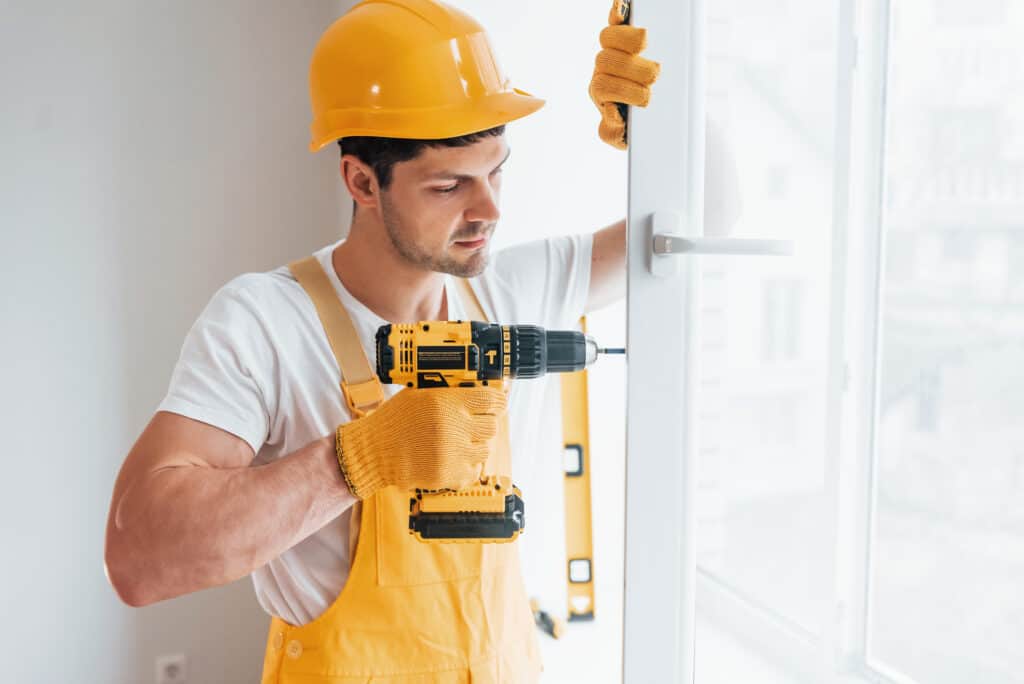How Often Should You Replace Your Windows?
Everything in your home has a lifespan, but does that also include windows? It does! Here’s everything you need to know about the lifespan of residential windows, common signs it’s time for window replacement, and what to expect during the installation process.
Average Window Lifespan
On average, the lifespan of a window is 15 years to 30 years. But this depends on several factors, such as the original installer’s craftsmanship, materials used, and the weather conditions where you live.
4 Signs It’s Time to Replace Your Windows
Even if your home’s windows haven’t reached their lifespan, there are other easy ways to know it’s time for a replacement.
1. Condensation Forms on the Inside of Windows
Condensation forms between the glass panes during the transfer of heat or cold through the metal spacer. It’s usually a sign the window seals are failing or the window frame is cracked or weakened.
2. Your Home Feels Drafty
As your windows age, warping glass and deteriorating rubber gaskets and adhesives begin to let hot or cold air into the home. While making the living environment uncomfortable, drafty windows raise your monthly electric bill.
3. The Glass Pane is Hot or Cold to the Touch
Standard double-paned windows are designed to keep the outside temperature out and the inside temperature in. The inner pane of a window, or the one inside your home, shouldn’t feel like the outdoor temperature when touched. If it does, it usually means the seals have degraded, and the window needs to be replaced.
4. You Have Cracked or Broken Frames or Panes
Cracked frames or panes should be repaired or replaced as soon as you notice them, especially if the window opens and closes. Replacing the window frame is the best option in most of these situations. Yet, depending on the window’s age, the frame may have been phased out, and a repaired window will have a different look than other windows in the home.
Broken or cracked panes should be replaced immediately, as they can be a safety hazard even after a repair.
Process of Replacing Windows
Replacing the windows in a home is indeed a process, one that takes a good amount of planning and patience. But it’s well worth the investment.
Choose new windows
Perhaps the most decision-intensive part of replacing windows is choosing your new windows. The two biggest factors to consider are:
- Appearance: You’ll want to choose a window that looks good from the inside and outside for many years.
- Energy efficiency: A professional window installer can help guide you through the different energy-efficient values and ratings, such as U-values, R-value, and Low-E insulating glass with argon.
From there, it’s essential to dive deep into these factors that also play a critical role in the functionality and longevity of the windows:
- Function: Does the window open as expected? Is it easy to open and close? Will it be easy to clean in its proposed location?
- Location: Be mindful of the direction the windows face and the amount of sunlight or weather they’ll be exposed to.
- Maintenance: Some homeowners prefer windows that are nearly maintenance-free, while others don’t mind the work involved to keep them in functional shape.
- Color options: Windows are a great reflection of your style and add appeal to the home.
- Purpose: Do you want the windows to be decorative accents or open at will to increase the home’s natural airflow?
- Price: It’s important to shop around as the least expensive windows won’t provide the energy efficiency and comfort for years; higher quality windows would.
Once you’ve chosen new windows, it’s time to order and start preparing your home for installation.
Clear any window dressings
When you know when the installers will arrive, take any window dressings or treatments, such as blinds and curtains, off the windows. Tuck away decorations or ornaments adorning the ledges and sills.
Clear space around the window
Work with the installers to determine how much space they’ll need to work around each window. You may need to move furniture and wall decorations inside and prepare for ladders in bushes or flower gardens outside.
Allow installers access
Work with the installation team to figure out which doors in the house are best for access to the work area. Communicate with them about any arrival and departure times, such as arriving after 8 a.m. when the kids head to school.
How long does the process take?
Ordering to delivery is usually a few weeks, with the installation itself depending on the job complexity and crew size. For example, a small to average-sized window with a new insert can be installed by a two-person crew in roughly an hour.

- Historic replications, specialty shapes, and other custom windows;
- Interior and exterior trim removal, replacement, or reinstallation;
- Repairing wood rot and installing special flashing around a doorframe; or
- Weather, such as cold temperatures and rain.
Replacing the windows in your home takes time and many decisions, but a qualified window installation team works with you to make the process seamless. If it’s time to replace the windows in your home, contact Bell Brothers today to schedule an appointment!


